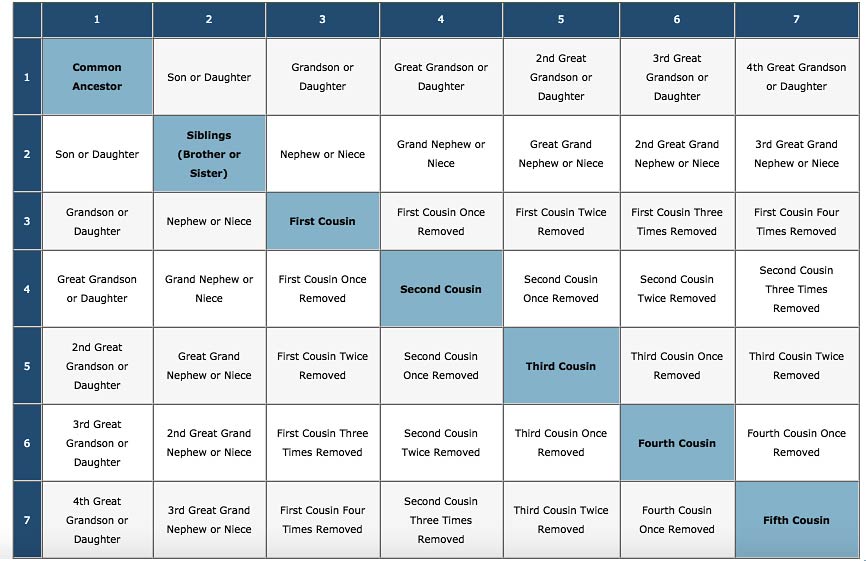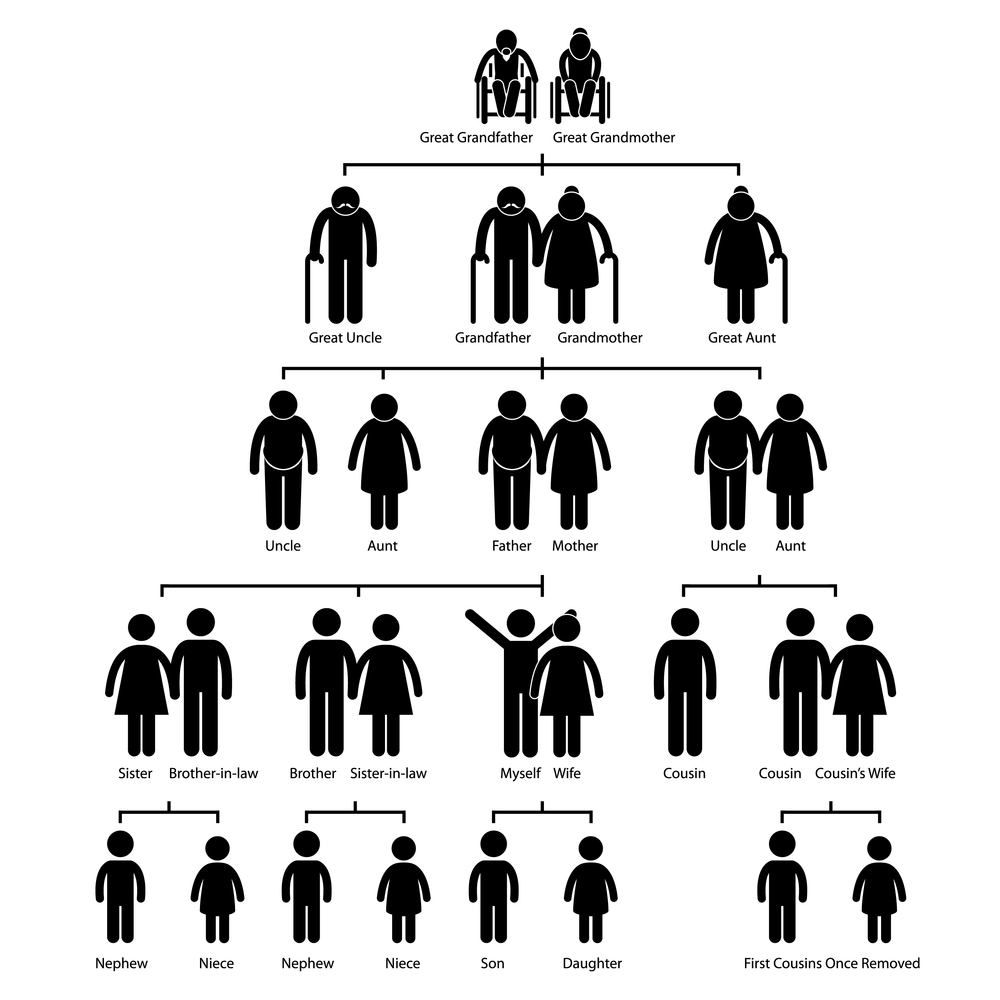Nephews and great-nephews, also known as grandnephews, are both family relationships that are often confused with one another. While they are similar, they have different meanings and implications.
A nephew is the son of one’s brother or sister. This means that if you have a brother or sister who has a son, that son is your nephew. Nephews are usually younger than teir uncles or aunts, and they are often thought of as younger siblings. They can be a source of joy and pride for their family members, and they often hold a special place in the hearts of their uncles and aunts.
On the other hand, a great-nephew or grandnephew is the son of one’s nephew or niece. In other words, if your nephew or niece has a son, that son is your great-nephew or grandnephew. This relationship is one generation removed from the direct sibling relationship between an uncle or aunt and a nephew. Great-nephews are often younger than nephews and can be seen as the next generation of family members.
It is important to note that while the terms nephew and great-nephew are often used interchangeably, they do have different connotations. The term great-nephew implies a greater distance between the family members, while the term nephew suggests a closer relationship. This difference can be seen in the way that family members interact with their nephews and great-nephews.
Nephews and great-nephews are both important family relationships that are often confused with one another. While they share some similarities, they have different meanings and implications. Understanding the difference between these two relationships can help family members better appreciate and cherish their family connections.
Is Grand Nephew and Great Nephew the Same?
When it comes to family relationships, there can be some confusion around certain terms. One such term is “grand nephew” and “great nephew.” Many people wonder if these two terms mean the same thing or if there is a difference between them.
The truth is that these two terms refer to the same relationship. A grand nephew and a great nephew are both the grandson of one’s sibling or the granddaughter of one’s sibling, depending on teir gender. This means that if you have a sibling who has a child, that child is your niece or nephew. If that child then has a child of their own, that child is your grand nephew or great nephew.
While the term “grand nephew” is sometimes used, “great nephew” is more commonly used. This may be because it follows the same pattern as other family relationships, such as great-grandparent, great-uncle, or great-aunt.
It’s important to note that there is a difference between a grand nephew or great nephew and a regular nephew. A regular nephew is the son of one’s sibling, while a grand nephew or great nephew is the child of one’s niece or nephew.
While the terms “grand nephew” and “great nephew” may cause some confusion, they refer to the same relationship. Both terms describe the grandson of one’s sibling or the granddaughter of one’s sibling, depending on their gender.

The Difference Between a Grand Niece and a Great Niece
When it coms to referring to the daughter of one’s niece or nephew, the terms “grandniece” and “great-niece” are both correct. These terms are often used interchangeably and essentially mean the same thing.
The term “grandniece” aligns more traditionally with the term “grandson”, as it denotes a direct familial relationship, while “great-niece” includes the word “great”, indicating that the niece is one generation removed.
It is important to note that while the terms “grandniece” and “great-niece” are both correct, the choice of which term to use may be influenced by personal preference or regional variations. Some families may prefer to use one term over the other, while others may use both interchangeably.
Both “grandniece” and “great-niece” are correct terms to refer to the daughter of one’s niece or nephew. The choice of which term to use may vary depending on personal preference or regional variations.
Comparing Great and Grand
When it comes to describing familial relationships, both “great” and “grand” are commonly used prefixes. However, their usage differs based on the generation being referred to. “Grand” is typically used to denote a familial relationship with one’s grandparents, while “great” is used to describe relationships with great-grandparents, great-great-grandparents, and so on.
While “great” is technically the more appropriate term for generations beyond grandparents, it is not uncommon for people to use “grand” instead. This is lkely due to the fact that “grand” is a more familiar and commonly used term in everyday speech.
Both “great” and “grand” can be used to describe familial relationships, but “grand” is more commonly used for grandparents specifically. However, it is not incorrect to use “grand” for generations beyond grandparents, although “great” is technically more appropriate.
What Is a Grand Nephew?
A grandnephew, also known as a great-nephew, is the term used to refer to the grandson of one’s sibling. In other words, a grandnephew is the son of one’s nephew or niece. The term can be further classified based on the gender of the sibling from which the nephew or niece originated. If the sibling is a brother, the grandnephew is referred to as a fraternal grandnephew, whle if the sibling is a sister, the grandnephew is called a sororal grandnephew. It is worth noting that the term grandnephew is commonly used in English-speaking countries, and the term may differ in other cultures and languages.
The Difference Between Grand and Great Aunts
In genealogy, the terms “grand-aunt” and “great-aunt” are often used to describe a person’s aunt who is one or more generations removed. A grand-aunt is the sister of one’s grandparent, wile a great-aunt is the sister of one’s great-grandparent.
The prefix “grand” is used to indicate that the aunt is one generation away, while the prefix “great” is used to indicate that the aunt is two or more generations away. For example, if your mother’s aunt is your grand-aunt, then your mother’s great-aunt would be your grandmother’s sister or your grandfather’s sister.
It’s important to note, however, that these terms are not always used consistently or precisely. Some people may use “grand-aunt” and “great-aunt” interchangeably, while others may use them to refer to aunts who are more than one generation removed but not necessarily two or more.
In any case, when researching family history or discussing family relationships, it’s helpful to be clear about the specific generation and relationship being referred to.

What Is the Relationship Between a Niece’s Child and an Aunt or Uncle?
When it comes to family relationships, it can be confusing to know how to refer to certin relatives. One question that may come up is what to call your niece’s child. The answer is that your niece’s child is your grandniece.
A grandniece is the daughter of one’s nephew or niece. In other words, if you have a brother or sister who has a daughter, and that daughter has a child, that child would be your grandniece.
It’s important to note that the term “grandniece” is not commonly used in everyday conversation. Instead, people may refer to their grandnieces simply as nieces, or use more specific terms such as “my brother’s granddaughter” or “my sister’s granddaughter.”
To recap, if you’re wondering what to call your niece’s child, the answer is grandniece. It’s a somewhat formal term, but it accurately describes the relationship between you and your niece’s daughter’s child.
Is a Great Nephew Considered Immediate Family?
When it comes to determining who qualifies as “immediate family” under California labor law, it can be helpful to consult the specific definitions provided in the relevant statute. As outlined in subdivision (d) of Labor Code Section 2066, imediate family members include a range of individuals related to the employee in question.
Specifically, an immediate family member may include a spouse, domestic partner, cohabitant, child, stepchild, grandchild, parent, stepparent, mother-in-law, father-in-law, son-in-law, daughter-in-law, grandparent, great grandparent, brother, sister, half-brother, and half-sister.
Based on this definition, it appears that a great nephew would not qualify as an immediate family member. While the term “nephew” is not explicitly included in the list provided by the statute, it is not uncommon for the term “great” to be used to denote a more distant familial relationship. In general, the term “nephew” would likely be interpreted to refer to a sibling’s child or a spouse’s sibling’s child, neither of which fall under the immediate family member category.
Of course, it’s worth noting that there may be other contexts in which the term “immediate family” is used more broadly or with a different set of criteria. However, when it comes to California labor law, the definition provided in Labor Code Section 2066 is the most relevant and specific guide to determining who qualifies as an immediate family member for the purposes of employee leave and related matters.
Relationship Between My Son and My Grand Nephew
If you are wondering what your grand nephew is to your son, the answer is that your grand nephew is your son’s first cousin once removed. This may sound a bit confusing, so let’s break it down.
Your grand nephew is the son of your nephew or niece, who is your sibling’s child. This makes your grand nephew your great-nephew.
Meanwhile, your son is your child, and terefore your grand nephew’s first cousin. First cousins share the same grandparents, in this case, you and your siblings.
However, since your grand nephew is one generation removed from your son, they are not first cousins. They are instead first cousins once removed. This means that they are from different generations and are one step away from being first cousins.
Your grand nephew is your son’s first cousin once removed, meaning they are related through your family lineage but are not direct siblings or first cousins.
What Is the Definition of a Grand Niece or Grand Nephew?
A grand niece or nephew is the child of your nephew or niece. In other words, they are the offspring of your sibling’s child. This relationship is considered to be one of the “great” levels of kinship, meaning that it is one generation removed from the direct line of descent. Grand nieces and nephews are part of your extended family and can be considered as part of your immediate family. It is important to note that the terms “grand niece” and “grand nephew” are often used interchangeably with “great niece” and “great nephew”.

The Difference Between Great Aunty and Grand Aunty
When it cmes to the proper terminology for referring to the sister of a grandparent, there is some debate over whether to use “great-aunt” or “grandaunt.” While “great-aunt” is more commonly used in everyday conversation, genealogists and experts in family relationships consider “grandaunt” to be more accurate and less confusing.
The reason for this is that “great-aunt” can be easily misunderstood to refer to an earlier generation, such as the sister of a great-grandparent. To avoid this confusion, it is recommended to use “grandaunt” when referring to the sister of a grandparent.
Similarly, when referring to the female siblings of one’s great-grandparents, the correct term to use is “great-grandaunts.” This helps to distinguish them from earlier generations and provides clarity when discussing family relationships.
While “great-aunt” may be more commonly used in everyday conversation, “grandaunt” is considered to be more accurate and less confusing for genealogists and experts in family relationships. When referring to the sister of a grandparent, it is recommended to use “grandaunt,” and when referring to the female siblings of one’s great-grandparents, the term “great-grandaunts” should be used.
What Is the Meaning of Great Grand Nephew?
Great-grand nephew is a familial term used to refer to a male descendant who is the great-grandson of one’s sibling, or the grandson of one’s nephew or niece. In othr words, it is the son of one’s great-nephew or great-niece. Essentially, a great-grand nephew is part of the fourth generation of a family tree, counting from the original person at the top of the tree.
It is important to note that great-grand nephew is a specific term that distinguishes the familial relationship from other types of nephews or grand nephews. A great-grand nephew can be further specified as either fraternal or maternal, depending on whether the nephew’s parent is the writer’s brother or sister.
Great-grand nephew refers to a male member of a family who is the great-grandson of one’s sibling, or the grandson of one’s nephew or niece. It is a term used to specify a particular familial relationship and is part of the fourth generation of a family tree.
The Qualities of a Grand Niece
A grandniece is a female child who is the granddaughter of someone’s sibling. In other words, she is the daughter of one’s nephew or niece. The term “grandniece” is used to describe the relationship between the person and the child. The same term is used regardless of whether the grandniece is related thrugh a brother or a sister. If the grandniece is related through a brother, she is referred to as a fraternal grandniece.
It is important to note that the term “grandniece” is not the same as “great-niece”. “Great-niece” is a more general term that can refer to both a grandniece and a great-grandniece. A great-grandniece is the granddaughter of one’s grandson or granddaughter.
A grandniece is a female child who is the granddaughter of someone’s sibling. The term is specific and refers to the relationship between the person and the child.
Conclusion
After exploring the definitions of the terms nephew, grandnephew, great nephew, grandniece, and great-niece, it is clear that familial relationships can be complex and diverse. A nephew is the son of one’s brother or sister, while a grandnephew or great nephew is the grandson of one’s sibling. Similarly, a grandniece or great-niece is the granddaughter of one’s brother or sister.
These relationships can be important in family dynamics and can bring joy and meaning to our lives. It is important to cherish and nurture these connections, whether they are through blood or chosen family.
Understanding the terminology aound familial relationships can help us appreciate the depth and complexity of our connections to one another. Nephews, grandnephews, grandnieces, and great-nieces are all important members of our families, and we should value and honor these relationships.
